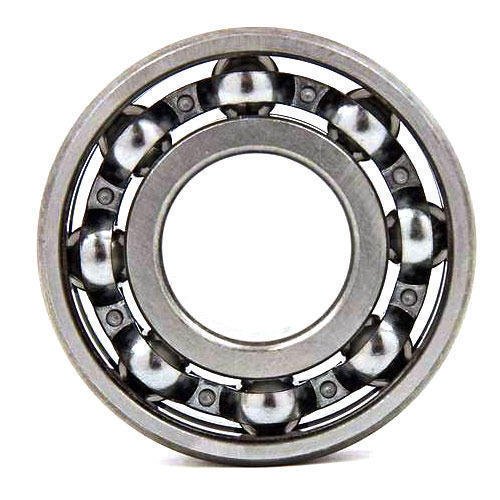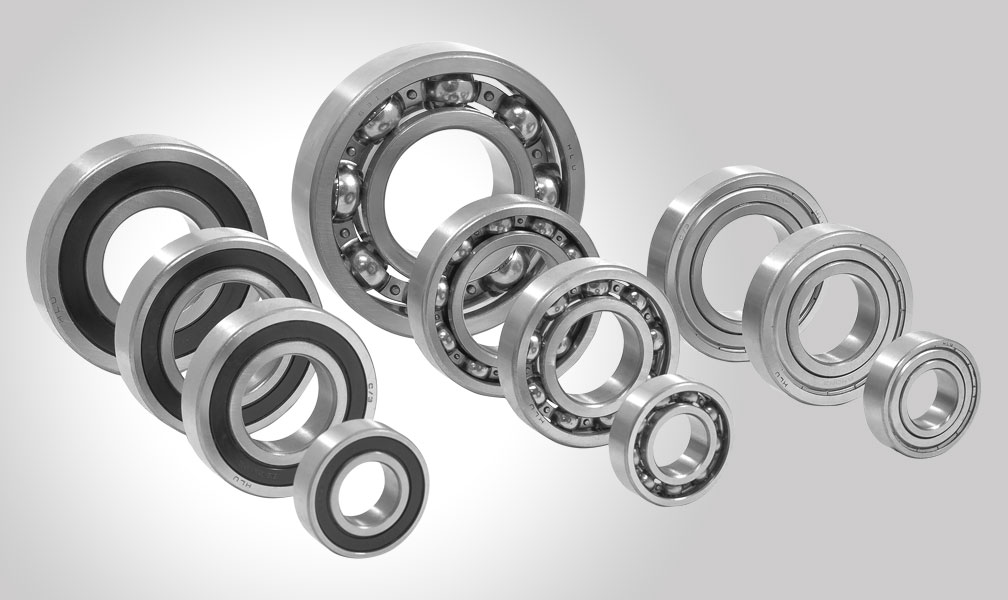What are the key advantages of using radial bearings in various industrial applications?
Radial bearings offer several key advantages that make them highly advantageous for various industrial applications. These advantages contribute to improved performance, reliability, and efficiency in machinery and equipment. Here are the key advantages of using radial bearings:
1. Load Support:
Radial bearings provide excellent load support, distributing and carrying radial loads in machinery and equipment. They are designed to handle the weight of rotating components, belts, pulleys, and other radial forces. By effectively supporting the loads, radial bearings minimize stress on the rotating components, ensuring smooth operation and preventing premature wear or damage.
2. Friction Reduction:
Radial bearings are designed to minimize friction between the rolling elements and raceways, resulting in reduced energy loss and improved efficiency. The rolling action of the elements reduces sliding friction, allowing machinery to operate with less resistance and lower power consumption. By reducing friction, radial bearings help optimize the performance of industrial applications, leading to increased productivity and energy savings.
3. Smooth Operation:
With their ability to facilitate smooth rotation, radial bearings contribute to smooth and precise operation in industrial applications. The rolling elements, such as balls or rollers, enable low-friction motion, ensuring that rotating shafts or assemblies move with minimal vibrations or jerks. This smooth operation enhances the overall performance, accuracy, and reliability of machinery and equipment.
4. Noise and Vibration Reduction:
Radial bearings play a crucial role in reducing noise and vibration in industrial applications. The rolling elements and bearing structure absorb and dampen vibrations generated during operation, minimizing their transmission to other components. By reducing noise and vibration, radial bearings contribute to a quieter and more comfortable working environment, as well as extending the lifespan of the equipment by reducing the risk of damage caused by excessive vibrations.
5. Versatility and Adaptability:
Radial bearings are highly versatile and adaptable to a wide range of industrial applications. They are available in various sizes, designs, and materials, allowing engineers to select the most suitable bearing for specific operating conditions and requirements. Radial bearings can withstand different speeds, temperature ranges, and environmental conditions, making them well-suited for diverse industrial applications across various industries.
6. Compact Design:
Radial bearings enable compact and space-efficient designs in industrial machinery and equipment. Their ability to support loads and facilitate smooth rotation allows engineers to design systems with smaller dimensions, reduced weight, and tighter tolerances. This compact design feature is particularly crucial in applications where space constraints or weight considerations are significant factors.
7. Longevity and Reliability:
Radial bearings are engineered to provide long service life and reliable performance in demanding industrial environments. They are designed with high-quality materials and advanced manufacturing techniques to withstand heavy loads, high speeds, and harsh operating conditions. Radial bearings undergo rigorous testing and quality control measures to ensure their durability and reliability, minimizing downtime and maintenance costs in industrial applications.
8. Cost-Effectiveness:
Radial bearings offer cost-effectiveness in industrial applications. Their ability to reduce friction, minimize power loss, and provide reliable performance contributes to improved energy efficiency and reduced operating costs. Additionally, the long service life and low maintenance requirements of radial bearings contribute to overall cost savings over the lifespan of the machinery or equipment.
In summary, the key advantages of using radial bearings in various industrial applications include load support, friction reduction, smooth operation, noise and vibration reduction, versatility, compact design, longevity and reliability, and cost-effectiveness. These advantages make radial bearings an essential component for enhancing performance, efficiency, and reliability in industrial machinery and equipment.
Can you provide examples of industries or equipment that frequently use radial bearings?
Yes, radial bearings are widely used in various industries and equipment where rotational motion is involved. They are essential components in many applications that require efficient and reliable operation. Here are some examples of industries and equipment that frequently utilize radial bearings:
1. Automotive Industry:
The automotive industry extensively uses radial bearings in various components such as engines, transmissions, wheel hubs, suspension systems, and electric motors. Radial bearings ensure smooth and reliable rotation in these applications, contributing to the overall performance and durability of vehicles.
2. Industrial Machinery and Equipment:
Radial bearings find extensive use in a wide range of industrial machinery and equipment. This includes pumps, compressors, fans, motors, conveyors, machine tools, printing presses, textile machinery, and packaging equipment. Radial bearings in these applications support rotational motion, reduce friction, and ensure precise operation, thereby enhancing productivity and reliability.
3. Aerospace Industry:
In the aerospace industry, radial bearings are vital for various applications, including aircraft engines, landing gear, control systems, and helicopter rotor systems. These bearings provide critical support for rotational motion under demanding conditions, such as high speeds, extreme temperatures, and heavy loads.
4. Power Generation:
Power generation facilities, such as thermal power plants, hydroelectric plants, and wind turbines, rely on radial bearings in turbines, generators, and other rotating machinery. Radial bearings ensure smooth rotation and efficient power generation by minimizing friction and supporting heavy loads in these critical energy production systems.
5. Heavy Equipment and Construction:
In the heavy equipment and construction industry, radial bearings are used in equipment like excavators, cranes, loaders, bulldozers, and concrete mixers. These bearings enable smooth operation and support the heavy loads encountered during construction and earthmoving activities.
6. Mining and Quarrying:
In mining and quarrying operations, radial bearings are employed in machinery such as crushers, screens, mills, and conveyors. These bearings withstand harsh conditions, heavy loads, and high speeds, ensuring reliable performance in demanding environments.
7. Railway and Transportation:
Radial bearings play a crucial role in the railway and transportation industry. They are used in applications such as locomotives, passenger trains, freight trains, tramways, and metro systems. These bearings support the rotational motion of wheels, axles, and drive systems, ensuring safe and efficient transportation.
8. Medical and Scientific Equipment:
Radial bearings are utilized in various medical and scientific equipment, including centrifuges, laboratory instruments, imaging devices, and precision equipment. These bearings provide smooth rotation, accuracy, and stability required for critical research, diagnostics, and medical procedures.
9. Marine and Offshore Industry:
Radial bearings are used in marine and offshore applications, such as ship propulsion systems, marine winches, rudders, and offshore drilling equipment. These bearings withstand corrosive environments, high loads, and challenging operating conditions encountered in marine and offshore operations.
10. Renewable Energy:
In the renewable energy sector, radial bearings are employed in wind turbines, solar tracking systems, and tidal energy converters. These bearings support the rotation of turbine blades, solar panels, and other components, ensuring efficient energy generation from renewable sources.
These examples highlight the broad range of industries and equipment that frequently rely on radial bearings. The versatility, reliability, and performance of radial bearings make them indispensable components in numerous applications where rotational motion is essential.
How do innovations and advancements in radial bearing technology impact their use?
Innovations and advancements in radial bearing technology have a significant impact on their use in various industries and applications. These advancements drive improvements in performance, reliability, efficiency, and versatility of radial bearings. Here’s a detailed explanation of how innovations and advancements in radial bearing technology impact their use:
1. Enhanced Performance:
Advancements in radial bearing technology lead to improved performance characteristics. This includes increased load capacities, higher rotational speeds, reduced friction, and enhanced stiffness. These improvements allow radial bearings to handle more demanding loads and operate in high-speed applications more effectively. Enhanced performance enables the use of radial bearings in a wider range of industrial applications, contributing to increased efficiency and productivity.
2. Extended Service Life:
Innovations in bearing materials, lubrication systems, and surface treatments result in extended service life for radial bearings. New materials with superior wear resistance and corrosion resistance properties allow bearings to withstand harsh environments and reduce the risk of premature failure. Advanced lubrication techniques, such as self-lubricating or solid lubricant coatings, minimize friction and wear, further prolonging the bearing’s service life. The ability of radial bearings to operate reliably for longer periods translates into reduced maintenance requirements and downtime.
3. Improved Reliability:
Advancements in radial bearing technology enhance their overall reliability. New designs and manufacturing techniques ensure consistent quality, dimensional accuracy, and precise tolerances, resulting in reliable performance under varying operating conditions. The use of advanced simulation and testing methods enables better prediction and understanding of bearing behavior, allowing for optimized designs and improved reliability. Enhanced reliability reduces the risk of unexpected bearing failures, which can lead to costly downtime and equipment damage.
4. Higher Efficiency:
Innovations in radial bearing technology contribute to higher efficiency in mechanical systems. Reduced friction and improved lubrication techniques minimize energy losses within the bearing, resulting in improved overall system efficiency. Bearings with lower friction help reduce power consumption and improve energy utilization, making them particularly beneficial in applications where energy efficiency is a priority, such as electric motors or automotive drivetrains.
5. Miniaturization and Compact Designs:
Advancements in radial bearing technology enable the development of smaller and more compact bearing designs. This is particularly important in industries where space constraints are a significant consideration. Miniaturized bearings allow for the design of smaller and lighter equipment without compromising performance. They find applications in industries such as aerospace, robotics, medical devices, and electronics, where size and weight reduction are crucial.
6. Specialized Applications:
Innovations in radial bearing technology have led to the development of specialized bearings tailored for specific applications. For example, advancements in bearing materials and designs have resulted in bearings capable of operating in extreme temperature or high-vibration environments. Specialized bearings designed for specific industries, such as the food and beverage or pharmaceutical sectors, meet stringent regulatory requirements regarding hygiene and contamination prevention. These specialized bearings expand the range of applications where radial bearings can be used effectively.
7. Integration with Sensor Technologies:
Advancements in sensor technologies have facilitated the integration of condition monitoring and predictive maintenance capabilities into radial bearings. Bearings equipped with sensors can provide real-time data on factors such as temperature, vibration, and load conditions. This allows for proactive maintenance and early detection of potential issues, enabling timely interventions to prevent unplanned downtime and optimize equipment performance.
8. Cost Optimization:
While innovations and advancements in radial bearing technology often involve initial investments in research and development, they can lead to long-term cost savings. Improved performance, extended service life, and reduced maintenance requirements result in lower operational costs over the bearing’s lifetime. Additionally, advancements in manufacturing processes and economies of scale may contribute to more affordable bearing options, making advanced radial bearing technology accessible to a wider range of applications.
By continually pushing the boundaries of radial bearing technology, innovations and advancements have a profound impact on their use across various industries. Enhanced performance, extended service life, improved reliability, higher efficiency, miniaturization, specialized applications, integration with sensor technologies, and cost optimization are some of the key benefits that result from these advancements. As a result, engineers and designers have access to a wider range of bearing options to meet the evolving needs of modern industrial applications.
editor by CX 2024-05-09




